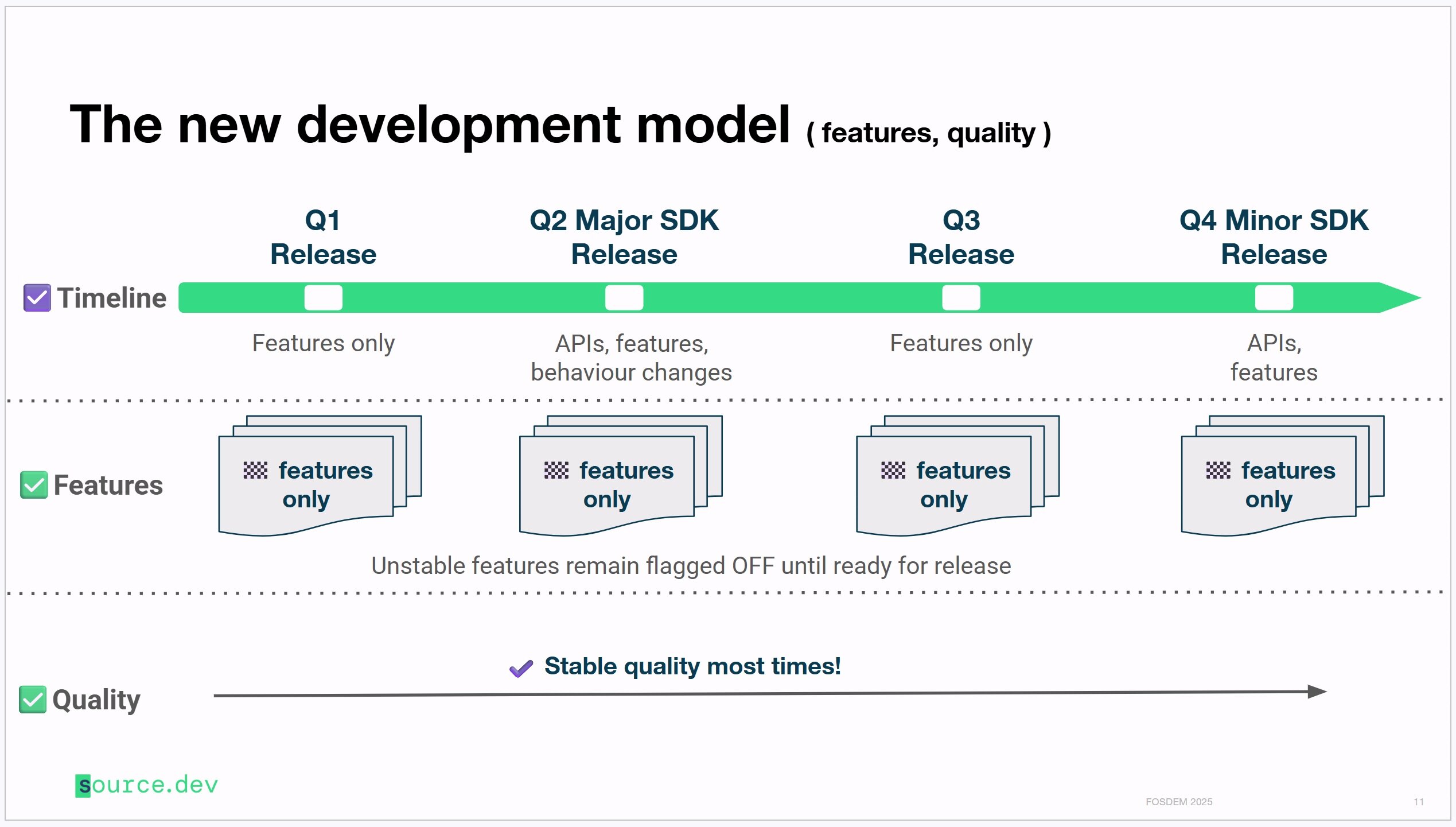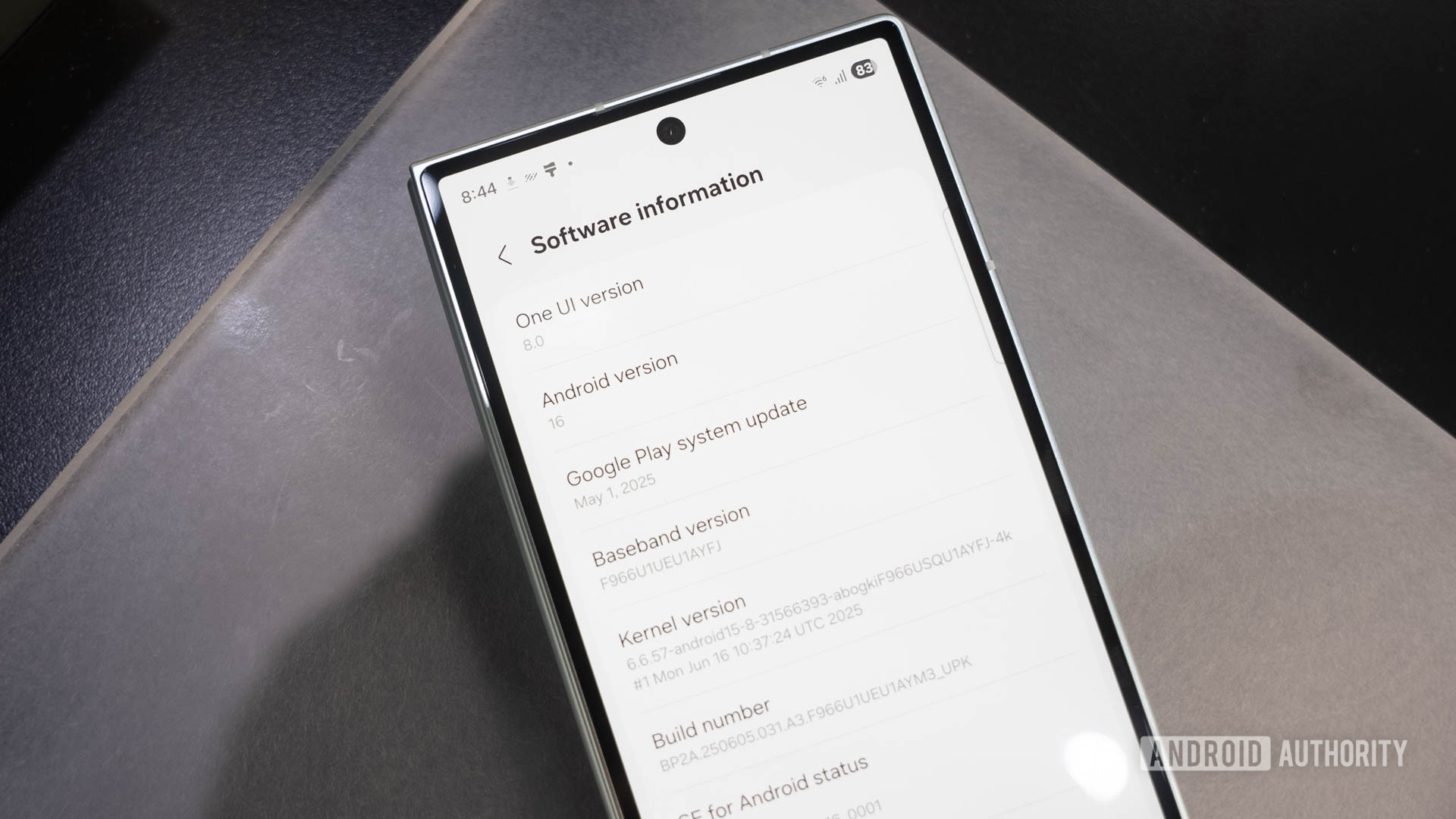TL;DR
- Samsung managed to release its Android 16-based One UI 8 update so quickly by adopting Google’s new “Trunk Stable” development model.
- Instead of using separate branches for new versions, all development now happens on a single, stable codebase with features hidden behind flags until ready.
- This trunk-based approach avoids the time-consuming “merge conflicts” of the old model, enabling a much faster release schedule for Google and Samsung.
While Google’s Pixel devices were the first to receive the Android 16 update last month, they weren’t the first to launch with the new OS. That honor, surprisingly, went to Samsung. The company launched its new Z Fold and Z Flip devices this month with One UI 8, just one month after Android 16’s public release. This quick turnaround was a notable improvement on Samsung’s part, and it was made possible by some big changes to how it develops One UI. Here’s what the company did.
Traditionally, Google developed Android using a branch-based model. For each new version, it would create a separate branch of code, adding features until development was frozen for release. The company would then merge this new branch back into Android’s main internal development branch.
Android’s old branch-based development model
While logical on the surface, this approach created significant problems for a project as complex as Android. Merging two massive codebases was rarely clean and often resulted in “merge conflicts” — bugs and inconsistencies that consumed valuable engineering time to fix. These conflicts also arose when merging code from publicly developed components, like the Bluetooth stack, back into the main internal development branch. This is a key reason why Google now develops Android entirely in private.
The branch-based model also hampered new feature development. If a feature wasn’t ready by the release deadline, developers had to merge the unfinished code back into the main branch, resolve any resulting conflicts, and then continue their work in the next version’s branch. This inefficient cycle delayed progress and wasted time that could have been spent perfecting the feature itself.
To solve these issues, Google shifted to a trunk-based development model. Now, all development happens in a single, main internal branch of Android that must remain stable at all times — a project Google calls “Trunk Stable.” To accomplish this, all new features, APIs, and bug fixes are developed behind “feature flags,” which allow them to be included in the code but disabled in public releases until they are complete and ready for launch.

Android’s new, trunk-based development model.
Google credits “Trunk Stable” with helping it accelerate Android’s release schedule, allowing it to launch Android 16 in June rather than in the usual August-to-October window. While Android 16 was the first major release to fully benefit from this new model, it wasn’t the first release under the new model. That distinction belongs to Android 14 QPR2, which shipped in March 2024.
Given how significant this change is and how deeply many OEMs customize Android, we had questions about whether companies like Samsung would adopt the new model. Back in October, I asked Seang Chau, VP and GM of the Android Platform, about this, and he told me that Google is working with its partners to ensure they stick as closely as possible to Trunk Stable. While he didn’t name specific partners, Samsung has since confirmed that it has adopted a trunk-based development model for One UI.
During a media roundtable following Galaxy Unpacked earlier this month, Sally Hyesoon Jeong, Executive Vice President and Head of Framework R&D at Samsung’s Mobile eXperience Business, told reporters that Samsung now works from its own single development branch. Google doesn’t require OEMs like Samsung to do this, as they have independent development processes and simply receive the underlying platform code. However, Samsung saw the benefits Trunk Stable offered and shifted its own One UI development to the new model. The company even worked with Google to design the new development model.

Lanh Nguyen /
The Galaxy Z Fold 7 (left) and Galaxy Z Flip 7 (right) were the first devices to launch with Android 16 out of the box.
Jeong also credited Trunk Stable for enabling Samsung to bring One UI 8 to market so quickly after the launch of Android 16. She said the company aims to match Google’s release cadence moving forward to bring the latest Android versions to devices as soon as possible. Only time will tell if Samsung can maintain this pace, but we hope it does, as the delay in rolling out One UI 7 annoyed many of its most dedicated fans.
Thank you for being part of our community. Read our Comment Policy before posting










